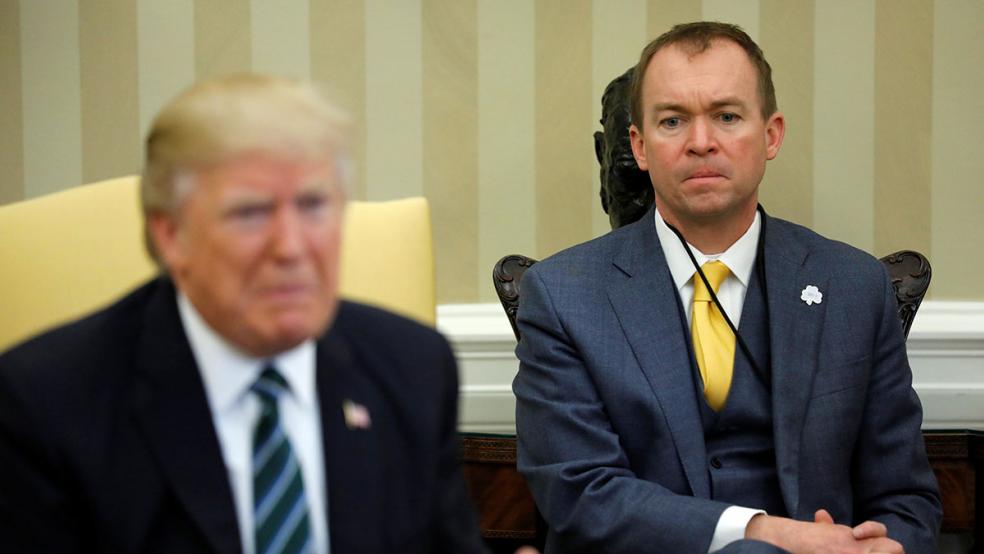The Trump administration on Thursday unveiled a sweeping proposal to reorganize the federal government by merging departments, shrinking agencies, consolidating social safety net programs, selling assets and revamping the way the government provides services and benefits to Americans.
What it does: The 132-page proposal would, among other things:
- merge the departments of Labor and Education into a new Department of Education and the Workforce. The proposal says the combined department would “address the educational and skill needs of American students and workers in a coordinated way, eliminating duplication of effort;”
- consolidate welfare and food assistance programs such as the Supplemental Nutrition Assistance Program (better known as food stamps) and the Special Supplemental Nutrition Program for Women, Infants, and Children (WIC) into the Department of Health and Human Services, which would be renamed the Department of Health and Public Welfare “to better capture the nature of its programs;”
- reorganize federal food safety programs into a single agency called the Federal Food Safety Agency;
- eliminate the Community Development Block Grant program;
- fully privatize mortgage giants Fannie Mae and Freddie Mac, reduce their role in the housing market and limit government mortgage subsidies;
- restructure the U.S. Postal Service or prepare it to be privatized;
- shift rural housing programs from the Department of Agriculture to the Department of Housing and Urban Development.
A little history: Every recent administration has sought to streamline federal bureaucracy and reduce costs, but major overhauls requiring congressional approval have tended to go nowhere. In some ways, the Trump proposal goes back to the future, The New York Times notes: “From 1953 to 1979, the Department of Health, Education and Welfare housed most of the nation’s social welfare and economic support programs. It was abolished by Congress under President Jimmy Carter, and split into the Department of Health and Human Services and the Department of Education, in recognition that no single department could manage all of the old department’s functions.”
Why they say they’re doing it: “This effort, along with the recent executive orders on federal unions, are the biggest pieces so far of our plan to drain the swamp. The federal government is bloated, opaque, bureaucratic, and inefficient. President Trump understands the frustration felt by hard-working Americans,” Mick Mulvaney, director of the Office of Management and Budget and chief architect of the plan, said in a statement, according to Politico. “I am eager to work with my colleagues across the Executive branch and in Congress to deliver a more trusted and efficient government that puts the American taxpayer first.”
Why others say they’re doing it: Cutting back the size of the federal government has long been a conservative goal. Republicans have for years sought to eliminate the Education Department, for example — the smallest Cabinet agency in terms of employees, with fewer than 4,000, and a budget of $68 billion. This proposal allows the Trump administration to say it’s actively pursuing that vision. And the consolidation of safety net programs under one mega-department “is part of a rebranding effort, championed by conservative think tanks and House Republicans, to link them to unpopular direct-cash assistance programs that have traditionally been called welfare,” Glenn Thrush and Erica L. Green write at The New York Times. “They have been using the word welfare because it is pejorative,” Elaine Waxman, a senior fellow in the Income and Benefits Policy Center at the Urban Institute, told the Times. “The programs you can call welfare are actually very small in comparison to SNAP, which is an income support necessary to help families, workers and millions of kids.”
Would the plan work? Seth Harris, deputy labor secretary under President Obama, told The Wall Street Journal that merging the Labor and Education departments is a “solution in search of a problem.” Beyond eliminating one Cabinet secretary’s salary, he said, “there won’t be savings if the new department has the same mandates and programs the two need to carry out.”
Will it happen? It’s more likely to wind up in the graveyard of Trump administration proposals. Much of the reorganization would require congressional approval, which makes it unlikely to happen anytime soon since Democrats and some Republicans are expected to oppose it. “Lawmakers have shown reluctance to embrace such plans in the past, and Congress has limited time for major legislation before the November midterm elections,” The Wall Street Journal reports.





